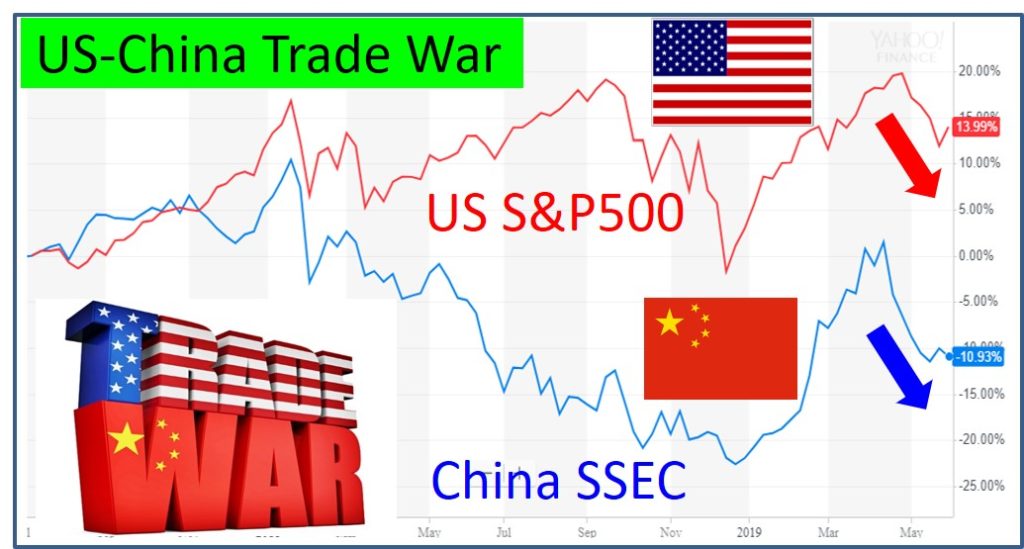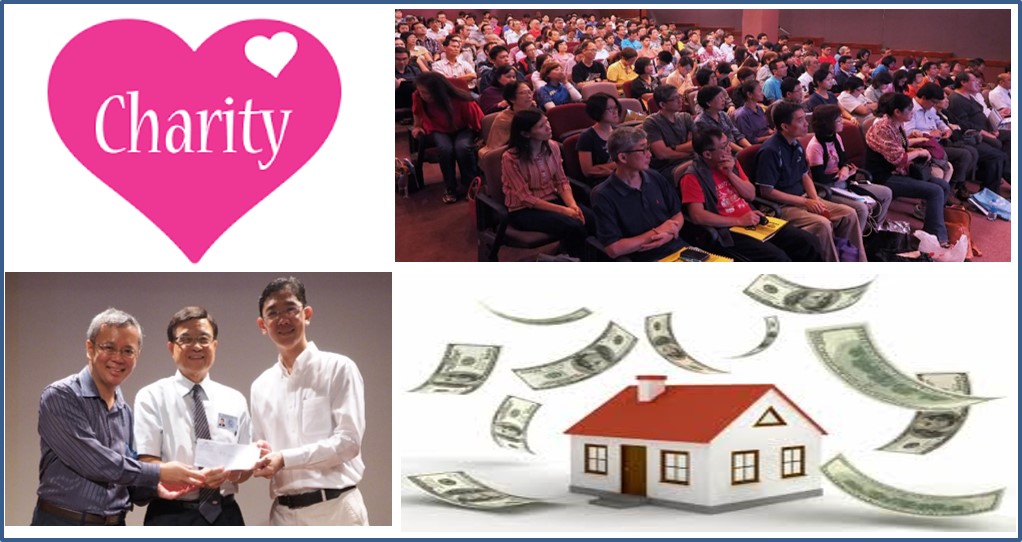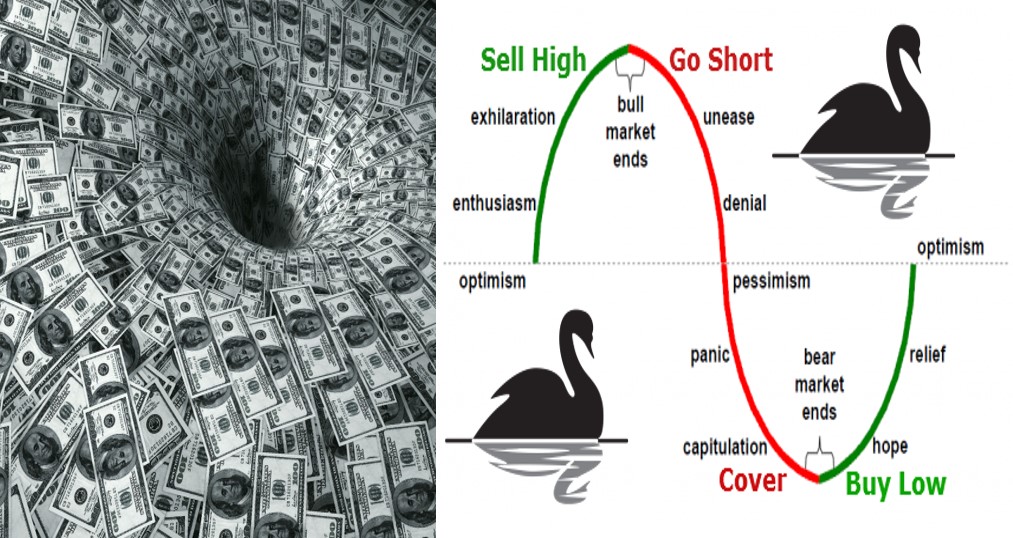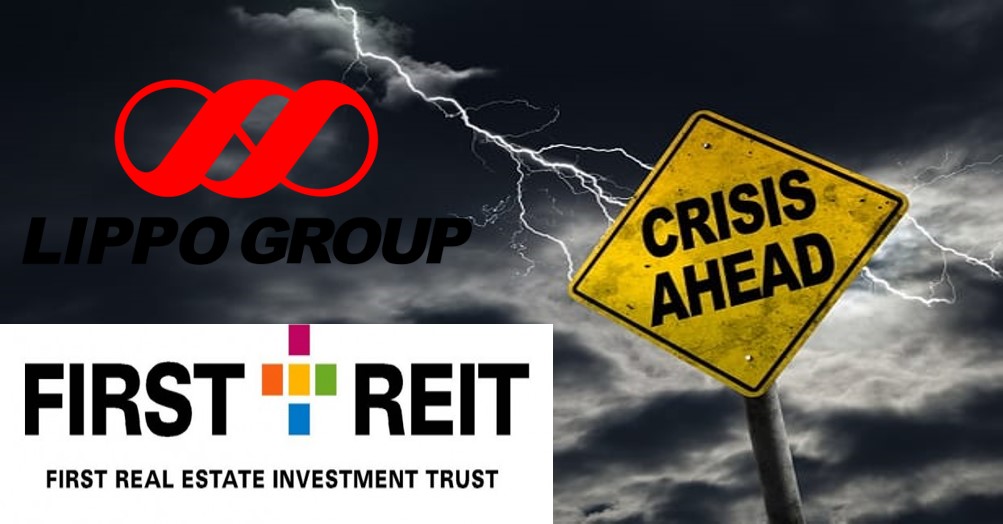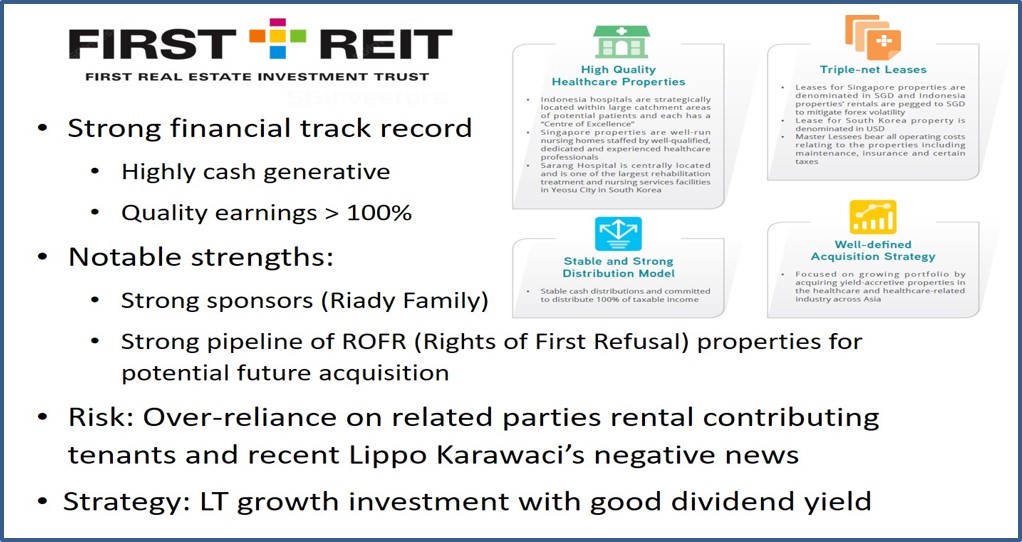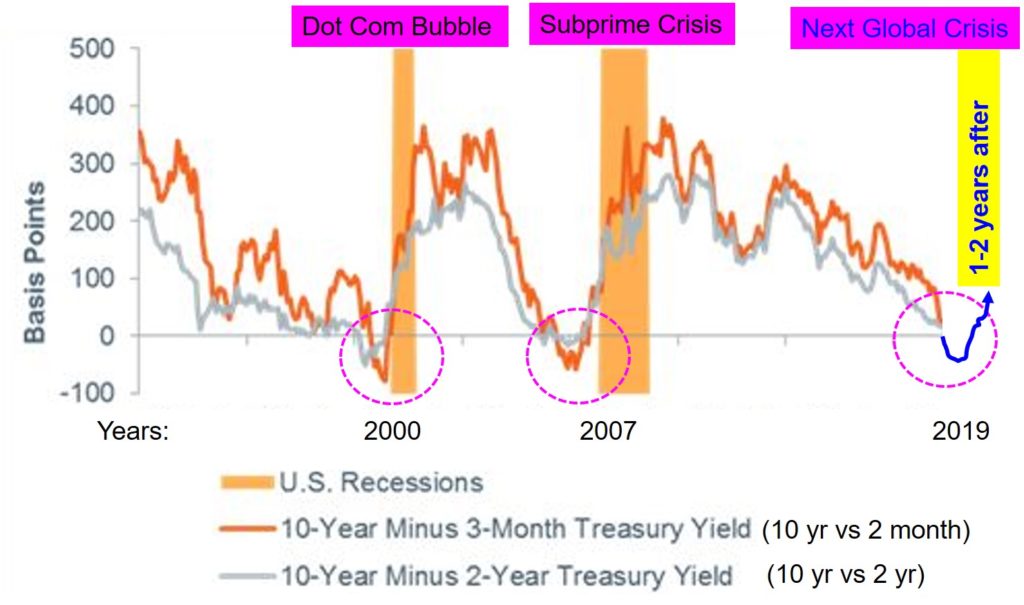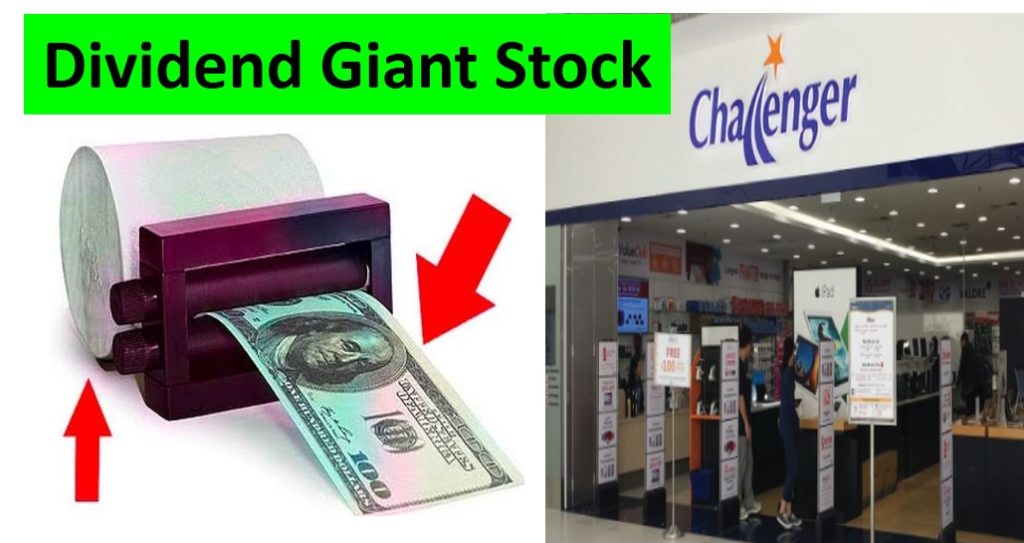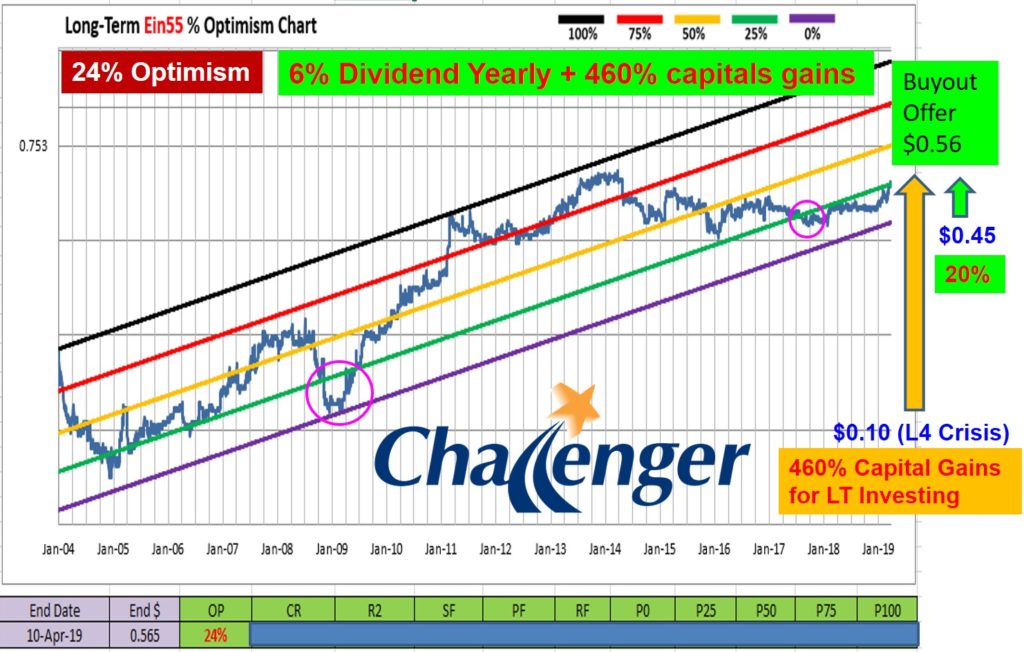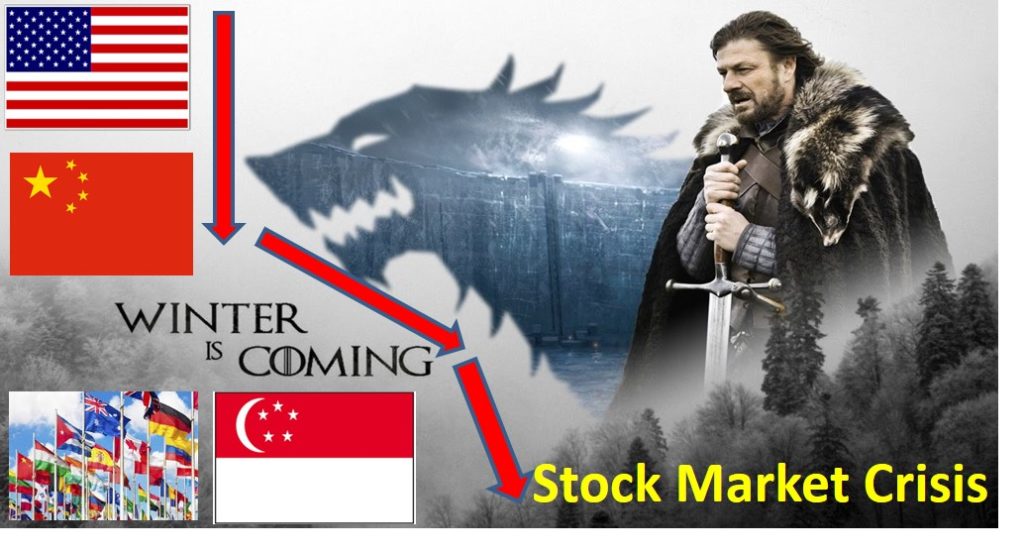
For fans of Game of Thrones, they are familiar with “Winter is Coming” as there are signs before the crisis in kingdom. However, for fans of stock market, it is important to know how to prepare for coming winter (global economic recession) after a long summer of bullish stock market over 10 years since recovery from the last global stock market crisis in year 2009.
Trump has been trying to prolong the bull run with various policies, eg. reduction of corporate tax from 35% to 21%, creating more jobs in US, trade war with China and the rest of the world for quick gains of US, etc. Unfortunately, economy usually behaves in a cyclic manner due to over-supply or over-demand at different stages of economy, requiring years to get back to normal again after reaching the extreme greed or fear in market emotions. When we see summer in US now (overheated economy with the lowest unemployment rate of 3.6% in 49 years in US, historical high of S&P500 index at 2973 points recorded recently, inverted bond yield, etc), we know “winter is coming” for global stock market crisis, the coldness of potential financial crisis would spread globally from US, the No 1 economy with more than 50% global stock value.
Here are 3 ways to prepare for global stock market crisis (financial winter time) for 3 fans of stock market: long term investors, market cycle investors and short term traders.
1) Stock Market Crisis for Long Term Investors
It is possible for long term investors to ignore the up and down in prices, including potential winter time (global stock market crisis) because the investors have prepared well in advance when investing many years ago, there is no need to exit at all during market correction. The conditions for long term or even lifetime investing (buy and hold permanently) are the stocks invested should be over a portfolio of at least 10 strong fundamental stocks at low optimism price, defensive in prices (less volatility with strong economic moat) with consistent growth in both share prices and businesses for capital gains, as well as some dividend payment (>2% dividend yield) as bonus, exceeding the bank interest rate.
This strategy requires knowledge of super giant stocks (what to buy from <5% of selected global stocks), ability to take action during the coldest winter (Level 4 – global financial crisis) and tremendous patience and calm to hold through a long term or even throughout the lifetime (continue to hold as long as quarterly or yearly review, confirming it is still a giant stock)
2) Stock Market Crisis for Market Cycle Investors
Market cycle investors integrate the best of investing (buy strong fundamental stocks) and trading (buy low sell high), leveraging on economic cycles (typically over 5-10 years) to safely maximize the return with natural investment clock.
This strategy requires a regional (Level 3) or global (Level 4) financial crisis to create tremendous fear in the stock market for majority of investors and traders to sell low unwillingly or willingly (over 50% discount in share prices at low optimism). However, a financial crisis could be a real crisis for weak businesses which may not last through the winter during economic recession (potential bankruptcy). Therefore, it is important to invest in a portfolio of at least 10 giant stocks with strong business fundamental, especially for stocks in cyclic sectors such as banking & finance, property, technology, airline, industrial, etc.
3) Stock Market Crisis for Short Term Traders
Short term traders could still enjoy the hot summer, eg. current bullish stock market to buy high sell higher with momentum trading or swing trading. This group of stock market fans could react faster to the changes in stock market, especially when it turns direction from bull to bear. In fact, short term traders could participate in all stages of stock market, firstly buy up in possible last phase of bullish stock market, shorting in bearish stock market crisis, finally buy up again when stock market is reborn again one day. However, the emotional control is the most critical (greed, fear, regret, etc) for stocks traders to be successful.
This strategy requires short term positioning (from weeks to months), successful traders need to follow proven trading plan to enter with bullish signals and exit when there are confirmed bearish signals (eg. trending down in share prices), continue to hold (position trading) when there are no major changes. Although short term stock trading may not require strong fundamental stocks as business may not have drastic changes in weeks or months, it is still useful for traders to consider profitable business (when long a stock) as both good fundamental and market greed could contribute to higher share prices in a bullish short term stock market.
Since summer is here and winter is coming, have you prepared for this rare opportunity? Any of the 3 fans above could profit from stock market crisis but should know the exact strategy (What to Buy, When to Buy/Sell). Don’t be ignorant with no action taken as there is great opportunity cost for missing in action in stock market crisis. Learn from Dr Tee with free 4hr stock investment course, preparing to profit from stock market crisis.


